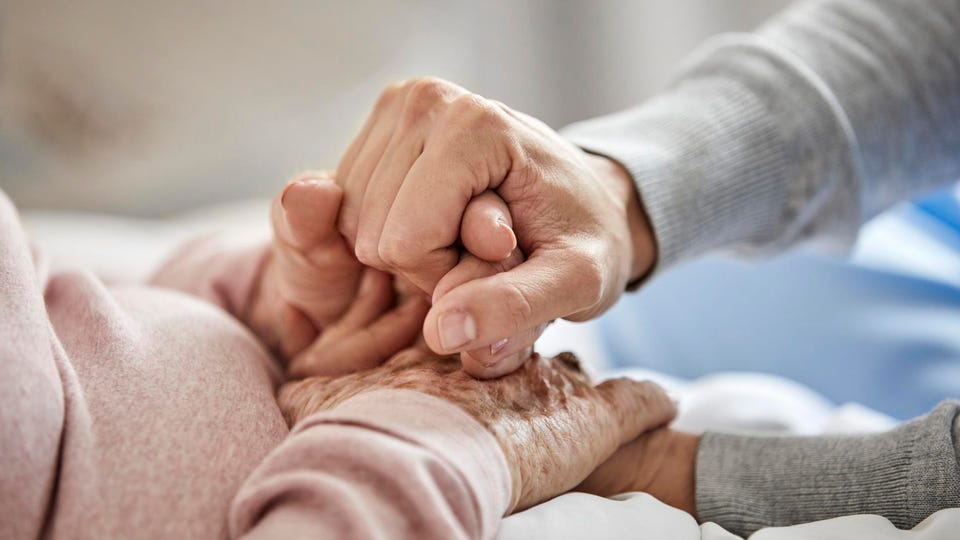Healthcare Healthcare Technology Is Enabling Millions Of People To “Age In Place” Sai Balasubramanian, M. D. , J.
D. Contributor Opinions expressed by Forbes Contributors are their own. I write about clinical medicine, innovation in healthcare, and health policy.
Following New! Follow this author to stay notified about their latest stories. Got it! Sep 27, 2022, 11:50pm EDT | New! Click on the conversation bubble to join the conversation Got it! Share to Facebook Share to Twitter Share to Linkedin “Aging in Place” refers to individuals aging in their own homes rather than moving into nursing homes or other types of care facilities. This is certainly not new, conceptually—for centuries, many cultures globally have celebrated the retirement of aged individuals and joyfully accept the practice of elder care.
What is relatively novel, however, is how healthcare technology has enabled an entirely new level of empowerment for older individuals. Many companies are leading this effort by spending millions of dollars on new and innovative technology. For example, Apple has slowly increased its offerings catered to this demographic, including features such as Fall Detection .
The company explains that “If you entered your age when you set up your Apple Watch, or in the Health app, and you’re age 55 and over, this feature turns on automatically [… if the watch…] detects a hard fall while you’re wearing your watch, it taps you on the wrist, sounds an alarm, and displays an alert. You can choose to contact emergency services or dismiss the alert […] If your watch detects that you’ve been immobile for about a minute, it will make the call automatically. ” Features like these provide reassurance for safer day-to-day mobility.
Similarly, the Covid-19 pandemic has introduced many new innovations that inherently caters well to “aging in place. ” Take for example home diagnostics, which became significalty more advanced due to stay-at-home orders and social distancing measures during the pandemic. New rapid testing capabilities, biomarker detection methods, and rapid diagnostic tools were quickly developed, many of which can be done at the comfort of one’s own home.
Take for example Everlywell, which offers numerous at-home test kits ; the company’s products range from testing for sexual health, inflammatory markers, and fertility indicators, to determining thyroid and hormone levels. For millions of older individuals that may have mobility issues or are not able to regularly go to a primary care physician, these tests may be a game-changer. This is in addition to the numerous other companies that have created similar diagnostic tests for influenza, Covid, and other common illnesses.
UNITED STATES – DECEMBER 30: COVID-19 antigen rapid test kits are pictured in Washington, D. C. , on .
. . [+] Thursday, December 30, 2021.
(Photo By Tom Williams/CQ-Roll Call, Inc via Getty Images) CQ-Roll Call, Inc via Getty Images Fortunately, care delivery itself has become marginally easier, with the mainstream deployment of telehealth. Thanks to high speed internet and better connectivity worldwide, individuals can now easily connect with physicians and specialists in their own homes through various telehealth platforms. I wrote last year about telehealth drones , which take telehealth services one step further: having a drone with a telehealth screen enter a house for a “virtual care visit,” so that an individual can speak with a physician live.
Recently, the University of Pittsburgh announced that it would be starting its Healthy Home Laboratory project, aimed at “Building tech-enabled solutions to support health and independence at home. ” As described, “The Pitt Healthy Home Laboratory is a community laboratory that brings the best science into home settings to maximize health and safety. We do this through the design, development, and evaluation of new and existing technologies, advancing healthy home services and interventions, and creating comprehensive health and environmental assessments to help people live safely and independently at home.
” In essence, researchers and innovators will use the initiative to identify key pain points for seniors and for those with mobility issues, with the goal of addressing these problems with practical solutions so as to better enable in-home living and aging. This seems like a positive and productive step in creating meaningful innovation. MORE FOR YOU CDC: Salmonella Outbreak Has Left 279 Ill, 26 Hospitalized In 29 States Canadians End Up In ICU After Attending ‘Covid Party’ White House Mandates Pfizer Vaccines for Millions of Citizens .
. . Before the FDA Clinical or Safety Reviews Have Been Made Public Indeed, there is still significant work to be done in this arena, especially with regards to patient safety, mobility, and the provision of quality care.
However, the above initiatives certainly grant a vision of a promising future. Follow me on Twitter or LinkedIn . Sai Balasubramanian, M.
D. , J. D.
Editorial Standards Print Reprints & Permissions.
From: forbes
URL: https://www.forbes.com/sites/saibala/2022/09/27/healthcare-technology-is-enabling-millions-of-people-to-age-in-place/
